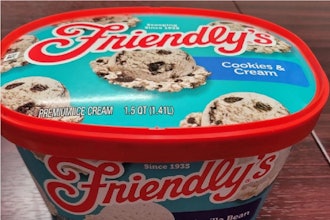
 Chirag Sheth, Vertical Marketing Manager, Videojet
Chirag Sheth, Vertical Marketing Manager, VideojetWhile consumer demand for salty snacks remains strong, consumer preferences within the $22.5 billion salty snack market continue to expand and evolve with an incredible proliferation of snack flavors hitting the shelves. According to the latest Salty Snacks in the U.S. report, the salty snack market will continue to grow to $27 billion by 2020. With consumer and retailer demand rising for greater variety, snack producers are facing greater complexity in their production and on their production lines.
The Rise of Line Changeovers
Different flavors, nutritional requirements and base compositions all add complexity for snack manufacturers that have a limited number of production lines. The time lost while switching a line from one product to another can have a real impact on the bottom line. Yet, in an effort to satisfy consumer preferences and stay competitive, many manufacturers are increasing the frequency of their line changeovers.
Finding the Right Solutions
In the salty snacks industry, product coding is not necessarily straightforward. Grease, salt and dust can lead to poor quality printing of expiration dates, bar codes, lot numbers, ingredients and other product information. Also, new products, flavors, promotions and bag sizes all increase the potential for costly coding errors. Manufacturers’ requirements for uptime and packaging line efficiency can be impacted by the coding solutions that they choose.
Food manufacturers can be challenged by their production throughput requirements, as well as the need for high quality codes that outdated equipment cannot handle. But smart, simple-to-use, low-maintenance solutions are available for the snack food industry. Thermal transfer overprinting (TTO) technology is particularly well-suited to many salty snack applications as it is engineered to print on flexible packaging such as bags and pouches. This high-resolution solution allows snack food producers to print expiration dates, production information and unit prices clearly on a bag, in a quality equivalent to the preprinted graphics. TTO is also used to print barcodes, product descriptions and nutritional information, helping to consolidate packaging film SKUs and reducing inventory costs.
Internal company research on Fast Moving Consumer Goods (FMCG), which include salty snacks, revealed that up to 70 percent of coding errors are caused by human error. To address this problem, TTO printers can be equipped with code assurance solutions. These offerings virtually eliminate coding errors by reducing the number of ways operators can make data input mistakes. They can also automatically populate code information directly from an ERP system or other controlled database, thus decreasing operator interaction.
With enhanced code assurance features, food manufacturers can benefit from savings due to lowered operating costs, reduced maintenance, increased throughput and enhanced customer satisfaction.
Continuous inkjet (CIJ), an ink-based coding and marking method, is particularly useful for more complicated snack food applications where the film is not flat, as with preformed pouches and bags with resealable zippers. CIJ can print up to five lines of text on a variety of packaging types including stationary packaging via traversing systems. For applications where CIJ is a good choice, laser marking may also be a viable solution based on the specifics of the substrate.
Case coding solutions, including direct-to-case printing and print-and-apply labeling, are usually integrated on the conveyor after the sealed case has been discharged. Printing this variable information directly on the case or label simplifies packaging demands and reduces changeovers by standardizing on common cases for different trading partners. High-resolution barcodes, lot, batch and supplier-specific information printed on labels and directly on cases can create a traceability point that is visible for warehouse, wholesaler and retailer use.
 Photo courtesy of Videojet
Photo courtesy of VideojetConsiderations for Selecting Coding Equipment
To ensure production line efficiency and uptime, and to best meet changing retailer and consumer needs, consider these three key points for selecting coding and marking equipment.
- Substrate of packaging: The equipment needed is highly dependent on the material on which the ingredients and other information will be printed or marked. Talk to an expert and have samples of your packaging material printed/marked with different technologies to help you find the ideal solution for your material.
- Setup/environment: The setup/environment of production influences the type of equipment that’s needed. For example, if the conveyor setup for cases is belt-driven vs. roller-driven, print-and-apply labeling can offer better flexibility than direct-to-case printers. Other criteria to keep in mind when selecting equipment is whether the environment is cold or wet, as well as the degree of maintenance rigor required.
- Retailer requirement: It is critical that manufacturers understand the packaging and labeling requirements of their retail customers. For instance, some retailers require multi-sided coding on the case while others specify different colors for their shelf-ready packaging.
The bottom line is that increased line changeovers can lead to coding errors, which can have real costs for snack food companies. Manufacturers need user-friendly coding solutions that help to speed line setup and changeover while also limiting the opportunities for user error. Keeping in mind the substrate of what the code will mark, what your production setup and environment entails and what retailer requirements you need to meet will help determine the best coding solution matched to your needs. There are a number of factors that will determine which coding solutions will best-suit your operation, and these factors are not static. Manufacturers should select a coding solution that offers dynamic solutions to a constantly changing industry.






















